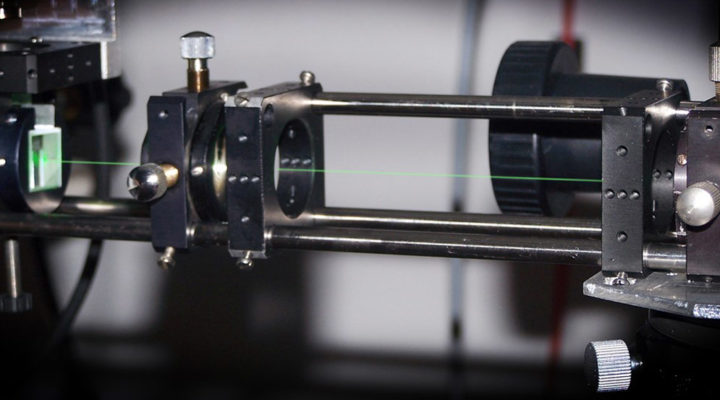BIOLOGICAL AND HEALTH SCIENCES
The “dance” of molecules
CONICET scientists used a microscope to analyze the behavior in time and space of the acetylcholine receptor, which plays a key role in the nerve transmission of muscle and brain. The observations were published in Scientific Reports.
“The application of a set of experimental biophysical and statistical techniques revealed aspects of the space-time dynamic of the acetylcholine receptor, a synaptic protein important in the nerve transmission in the brain and in the muscle. The alterations of the receptor are linked to a spectrum of neuropsychiatric and neurological diseases such as Alzheimer’s or Parkinson’s diseases, schizophrenia, addictions, chronic pain, muscular atrophy and autoimmune diseases, among others”, explains Francisco Barrantes. He is a CONICET researcher at the Instituto de Investigaciones Biomédicas (BIOMED, CONICET-UCA).
Barrantes, Alejo Mosqueira (BIOMED) and Pablo Camino (Facultad de Ciencias Exactas y Naturales de la Universidad de Buenos Aires) led a study that was published in the journal of the Nature group, Scientific reports. The researchers used a stochastity super resolution optical microscopy (“STORM”) -the first microscopy of this type in Argentina, built in Bahía Blanca in 2008- to follow the “dance” of thousands of molecule in the surface of living cells, with a temporal resolution of 10 milliseconds and a spatial resolution of around 40 nanometers.
Barrantes describes the study as “research on molecular sociology” as it was elucidated first the dynamic demographic, collective, behavior of all receptor molecules, and then the behaviour of each of them individually. We found that most molecules moved in an anomalous way called ‘sub-diffusive diffusion” which means that they move in the plane of the cell membrane more slowly and not by simple random thermal agitation.”
When the scientists analyzed the trace of each individual molecule they found that the trajectory of all the molecules, from the slowest, sub-diffusive, to the fastest (super-diffusive), had two phases: one of apparently random normal steps called Brownian; and the other, which involved short interruptions (of milliseconds) in which the molecule stopped, restricting its movement to a tiny surface of the other of a few nanometers.
The researchers also verified that the composition of the lipids in the medium in which the receptor molecules move –the biological membrane- significantly influences the movement of the receptors.”
By modifying cholesterol levels of the cellular membrane, the researchers could measure the influence of this neutral lipid on the molecular mobility. “Cholesterol levels influence the ability of the receptor to associate as a group, forming accumulations or, on the contrary going around the cell surface as a solitary individual”, Barrantes explains.
All these behaviors, like the regulation exerted by cholesterol on molecules involved in nerve transmission, have important functional consequences. The alterations of such mechanisms could be involved in certain disfunctions of the synapse that operates through the acetylcholine neurotransmitter, in diseases of the central and peripheral nervous systems.
